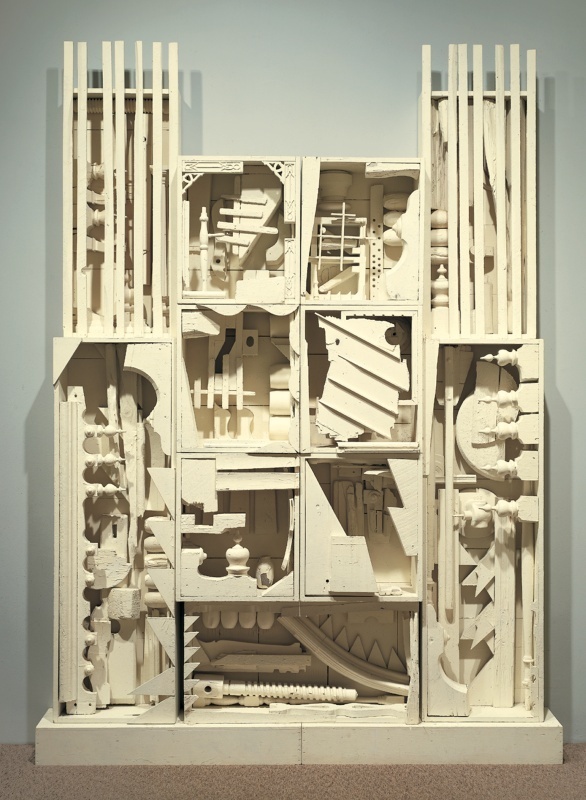|
Homework Assignment: Collect five objects that interest you. Objects can be beautiful, ugly, curious; it doesn’t matter. Look for objects that have interesting conceptual qualities such as purpose, origin, or associations. Look for objects with interesting physical qualities such as line, form, texture, color, etc. Please no dangerous objects, overly smelly or messy objects, or objects found in your backpack. Please do not bring anything that goes against school policy. Bring these five objects to class on Monday, April 7 Theme: Found object art draws connections from skills, the community, and the artist.
Overview: Students will learn about the concepts and principles behind art created with found objects through discussion and word association involving examples. Then they will learn about the process of planning for artworks by sketching found objects in a sculptural design and discussing how it could actually be assembled. Students will create a large group sculpture of found objects. Found objects- Objects of inconsequential material found just about anywhere, with interesting origins, history, or purposes, or exhibiting elements or principles of design or other aesthetic qualities. Found object art- Art assembled from various found objects. Principles of Design: repetition- The appearance of similar design features again and again. variety- A mixture of different design features. rhythm- The measured repetition of visual accents; similar to musical rhythm. balance- The equal distribution of visual weight as influenced by other principles and elements. emphasis- The stressing of a particular characteristic or area. economy- The absence of nonessential components. proportion- The relationships between sizes. Elements of Design: line- An area whose length is greater than its width, or in which two planes meet. form- The volume and shape of a three-dimensional work, including negative space. value- The degree of lightness or darkness. space- The three-dimensional field in which the artist works. texture- The surface characteristics of a work that are either felt or perceived visually. color- self-explanatory time- Representing a time or exhibiting the passage through time. http://www.cfa.arizona.edu/are477/files/lsnfnd.htm Comments are closed.
|
Studio ArtThis is full year foundation course that will aid in your understanding and creating a wide variety of 2-D and 3-D artwork.
Course ExpectationsWeekly
|


